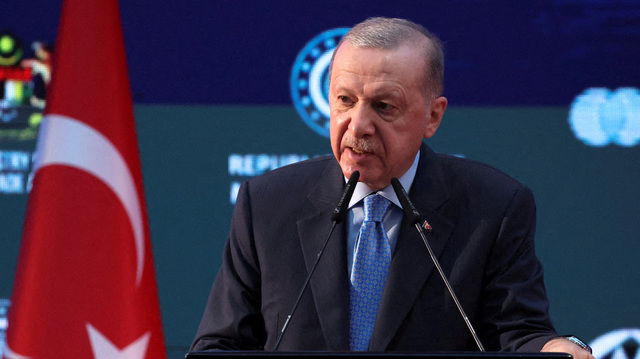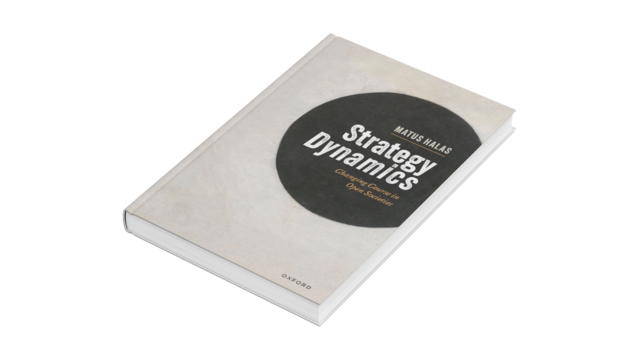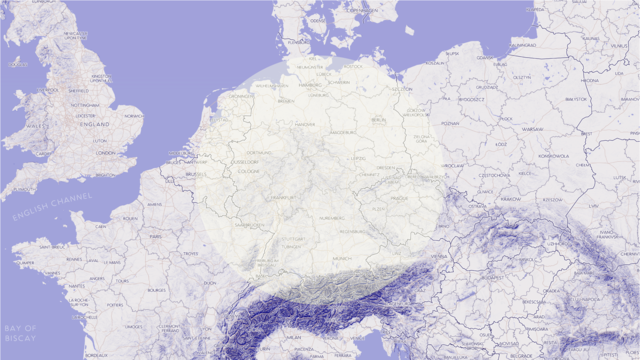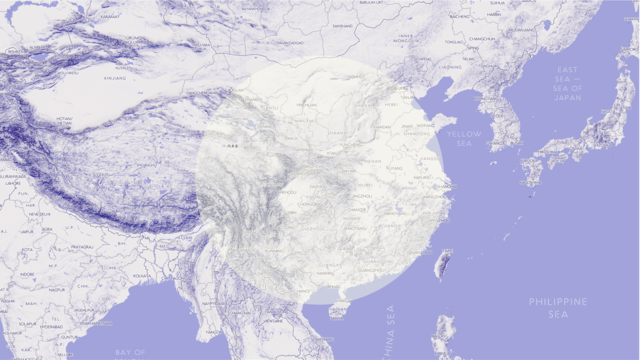The grass under two elephants: Updating China’s behavior in ocean-space and reactions by its neighbors
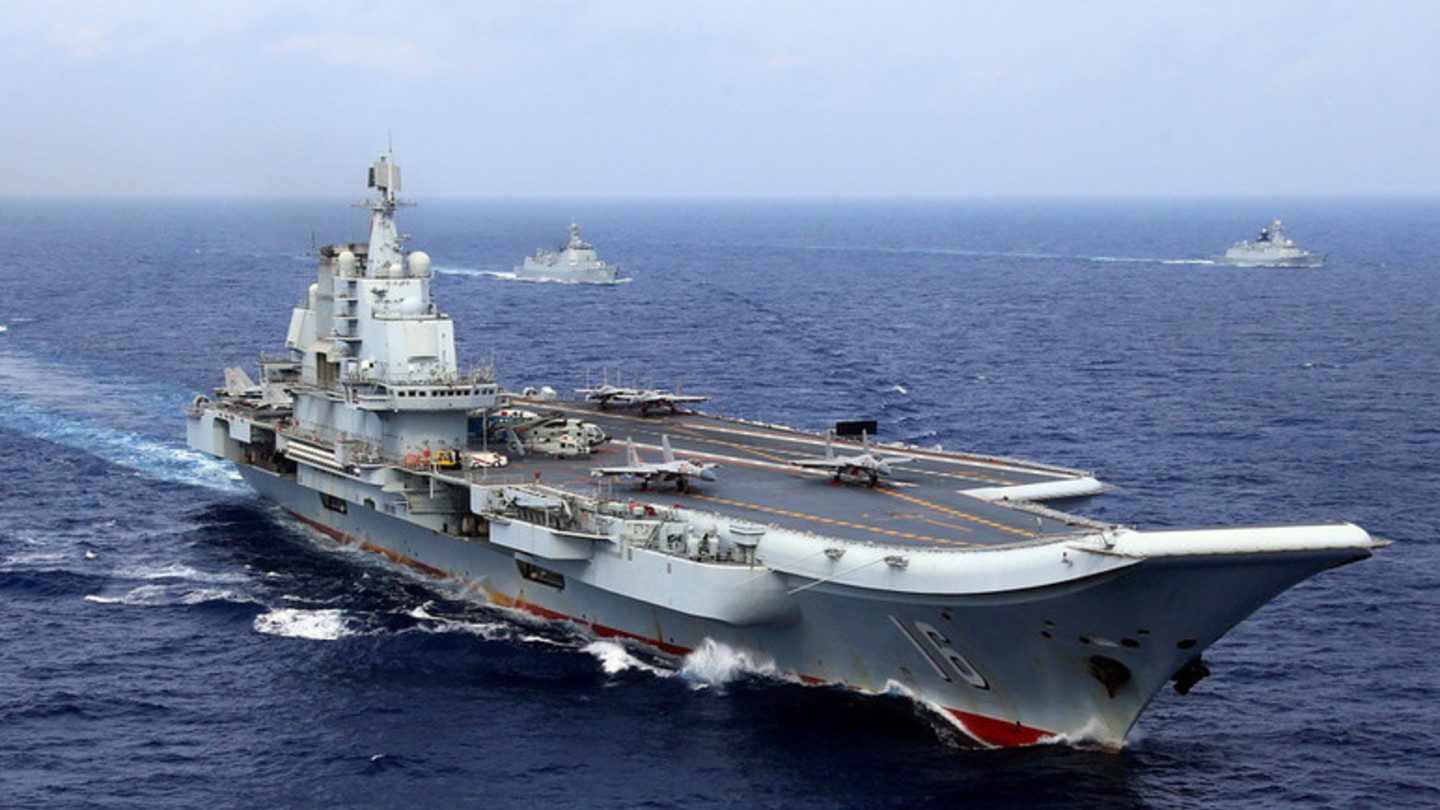
After the COVID-19 pandemic began spreading globally, many commentators pointed out that China was using the occasion to expand its influence and project its values worldwide. So-called “mask” and “vaccine” diplomacy, and the crackdown with new national security laws in Hong Kong, raised serious concerns. But Chinaʼs aggressive behaviour had been growing even before the pandemic began, especially in the maritime sphere. Indeed, not only Beijing but also neighbouring governments are utilizing ocean-space, which has ambiguous characteristics of state sovereignty, to buy time, even though the political goals of the countries may be different.
After the COVID-19 pandemic began spreading globally, many commentators pointed out that China was using the occasion to expand its influence and project its values worldwide. So-called “mask” and “vaccine” diplomacy, and the crackdown with new national security laws in Hong Kong, raised serious concerns. But Chinaʼs aggressive behaviour had been growing even before the pandemic began, especially in the maritime sphere. Indeed, not only Beijing but also neighbouring governments are utilizing ocean-space, which has ambiguous characteristics of state sovereignty, to buy time, even though the political goals of the countries may be different. However, in this era of Great Power competition, shifting lines of influence and rising tensions between the United States (US) and China (PRC) will make it difficult to maintain this approach. The highest priority of Chinaʼs core national interest is to recover Taiwan, a challenge complicated by President Donald Trump’s efforts to strengthen relations with Taipei. Here, I focus on the East China Sea and the South China Sea to update the situation.
Is China using the COVID-19 pandemic to further its expansionist policies?
In general, China utilizes so-called government ships such as research ships and Coast Guard cutters to impose sovereign rights and conduct “grey zone” tactics in ocean-space, because these ships enjoy special status under the United Nations Convention on the Law of the Sea (UNCLOS), which grants them immunity from other nationsʼ laws and regulations. Beijing recognizes these ships as the second-line fleet of the Chinese navy. In addition, Beijing’s bullying, micro-aggressive behaviour with the ships shows China’s dismissive attitude toward smaller, weaker countries. Here, we compare current Chinese activities with the previous year to verify China’s behaviour during the pandemic period.
In the East China Sea, China Coast Guard (CCG) vessels chased a Japanese fishing boat (the Zuiho-maru from Yonaguni-jima island) for almost four hours in Japanese territorial waters around the Senkaku Islands on May 8th. After Japan Coast Guard (JCG) vessels arrived to escort the boat and alerted Chinese cutters to leave Japanese waters, the CCG vessels sailed away. But they returned to chase the boat again the next day. Pursuit by CCG cutters was also observed between July 4th and 6th, on August 28th and again on October 15. The July incident lasted for 39 hours, marking the longest chase manoeuvre by CCG ships since 2014, however, CCG cutters sailed around the Islands for 57 hours and recorded the longest stay in Japanese water between October 11th and 13th. Overall this year, CCG cutters have been stationed in the contiguous zone just outside of Japanese territorial waters around the Senkaku Islands for 111 days (typically four cutters, replaced by a new contingent of four cutters once a month). This is almost double the duration of previous years. However, manoeuvres are not new. Rather, they represent a continuation of existing patterns, apparently influenced by Chinaʼs decision to tighten control during its fishing bans (May 1st – August 16th for standard fishing boats, May 1st – September 16th for bigger fishing boats).
Around Oki-no-tori-shima, the southernmost Japanese island in the Pacific Ocean, the Chinese research ship Da Yang Hao conducted research activities without any prior notification for six days at the beginning of July, even after JCG ships asked it to stop. Beijing recognizes Oki-no-tori-shima, not as an island but rocks on an atoll, which means there can be no Japanese EEZ around it because UNCLOS stipulates that no nation can establish an EEZ around a rock except claiming territorial water from it. However, it is important to keep in mind that Beijing has made territorial claims and created an EEZ around artificial islands in the South China Sea that were originally submerged rocks (nobody can declare territorial water from them), showing a typical Chinese “double standard.” At the end of July, China also deployed its ocean research ship Haiyang Dizhi 9 within 100 nautical miles of Amami Oshima Island in Japan’s EEZ in the East China Sea – as usual, without prior notification.
In April in the South China Sea, Beijing assigned Chinese names to 55 undersea features, many of them located in the Vietnamese EEZ. This indicated China’s continuous intent to strengthen effective control over those waters. However, according to past precedents established by international courts in maritime territorial disputes, any activities undertaken after a critical date (i.e., the date the dispute crystallized between the parties) do not legally strengthen sovereignty claims over a disputed area.
As in the East China Sea, CCG cutters sail in the EEZ of other countries with territorial claims in the South China Sea, such as Malaysia, Indonesia, the Philippines, and Vietnam, without advance notification. China defends this by insisting it is operating within the so-called “nine-dash line,” a claim clearly denied by the Permanent Court of Arbitration (PCA) in 2016. Beijing has totally ignored this decision. For example, in June 2020, CCG cutters rammed Vietnamese fishing boats and intimidated Vietnamese fishermen in the Vietnamese EEZ around the Paracel Islands. The Vietnamese were beaten and forced to sign a document stating that they violated the Chinese fishing ban. In July, Beijing deployed its 4,000-ton cutter CCG 5402 around the Lan Tay platform in Block 06/1 of the Vietnamese EEZ, impeding Vietnamese oil and gas production. In May, CCG cutters spent several weeks in the Malaysian EEZ harassing the Panamanian-flagged drillship West Capella, which was conducting oil research activity for the Malaysian state-owned company Petronas. In mid-September, the 2,000-ton Chinese cutter CCG 5204 entered the Indonesian EEZ near Natuna island, part of the Riau Islands, which overlap China’s nine-dash line. Another Chinese ship, San Sha 2 Hao, which is owned by Sansha City, a prefecture-level city that administrates the Paracel and Spratly Islands, visited many artificial islands within the nine-dash line. In September the Chinese research vessel Jiageng, owned by Xiamen University, conducted scientific marine research in the Philippine EEZ without any notification. Along with this micro-aggressive behaviour, China also conducted several large-scale joint military exercises that included firing DF-21D and DF-26B anti-ship ballistic missiles (ASBM) from inland to the sea, just as it did in reaction to American naval exercises last year.
During the first wave of the pandemic, Beijing felt challenged by COVID-19 narratives in the West, particularly those coming from the US, and needed to show ordinary Han Chinese the strength of the Communist Party of China (CPC). Especially for Xi Jinping, who initiated the “Chinese Dream” (establishing a great sphere with Han-centric China, led by the CPC, at the centre), it was a crucial time to secure his position in internal power struggles and keep good relations with the People’s Liberation Army (PLA). In this context, it is possible to conclude that China’s behaviour in the East China Sea and the South China Sea are a continuation of unilateral “salami-slicing” tactics. These have been used in recent years to express Chinaʼs disagreements, even as Beijing has adopted “mask” and “vaccine” diplomacy in an attempt to project its influence around the world and embrace anti-US countries.
A shifting balance of power between the two elephants in Asia
On July 22, 2020, the Center for a New American Security (CNAS) organized a virtual war game, “East China Sea 2030.” The participants included many experts who determine the actions of Tokyo, Beijing and Washington. They explored command and information concepts in simulating a US response to a potential Japan-China crisis involving the Senkaku Islands. The basic premise was that China occupied Uotsuri-jima, the largest of the Senkaku Islands, one day in 2030 and declared an EEZ of 80 nautical miles. Japanese Self Defense Forces (SDF) conducted several operations to recover the island from China.
The outcome was disastrous for Japan, which lost many naval combatants attempting to get close to the island. SDF units and bases on Okinawa were destroyed by Chinese long-range missiles, and at the end of the war game, the Senkakus remained in Chinese hands. With its geographical proximity, China was able to deploy naval and air reinforcements and launch multi-layered ballistic and cruise missile attacks from its mainland to prevent SDF from gaining access to the islands. Personally, this was not a surprising outcome, because it is an undeniable fact that SDF lack strategic offensive capability and lethality due to the countryʼs postwar pacifist constitution. Of greater concern was the political determination by institute experts that “the US would support Japan but should not get involved in the conflict.” American support in the game tended to be limited to mostly indirect tactics like using electromagnetic weapons to jam Chinese command and communication rather than mounting joint offensive operations. Although the participants tried to adhere to this strategy, Washington easily became involved in the conflict.
The premise of the game shows the differing expectations and concerns about the Japan-US security alliance. As Chinaʼs military strength and aggressiveness has grown, the reliability of the alliance and Americaʼs larger commitment to Asia has become a serious concern for Asian states. For example, Japan expects substantial US military reinforcements in case of an emergency, even though the guidelines for Japan-US defence cooperation stipulates that Japan has the primary responsibility to defend itself. On one hand, the security treaty includes the Senkaku Islands as a subject area of collective defence and offers American deterrent including a nuclear umbrella, but on the other hand, Washington maintains a neutral stance in territorial disputes of its minor allies.
In addition to concerns about Trump’s political will, US military superiority in the western Pacific has been surpassed rapidly by China with beefing up its military while the US concentrated on anti-terrorism wars. The pace of Beijing’s “blue water navy” construction is almost as fast as wartime production, with the number of naval vessels (about 350 – 360 ships) already exceeding the US Navy (296 ships as of early September). This is well short of Trump’s “350-ship fleet” policy, and while the US Navy has a more powerful arsenal – 11 aircraft careers, 10 amphibious assault ships, 14 strategic submarines armed with ballistic nuclear missiles, 54 nuclear attack subs – Washington has to deploy them around the world. Beijing, by contrast, can enjoy its geographical proximity to the East China Sea, Taiwan, and the South China Sea.
From an economic point of view, once China was able to get the COVID-19 pandemic under control, many indicators suggest that it has recovered and resumed its normal orbit. For example, consumption in August increased 0.5%, and even though Chinaʼs $14 trillion economy shrank 6.8% in the first quarter, its job market has stabilized. That is why other Asian countries have increased their trade activities with China. Also, thanks to the US-China trade war, countries in the Association of Southeast Asian Nations (ASEAN) are enjoying economic benefits such as a supply-chain alternative to China. Vietnam is the only other Asian country expected to mark positive economic growth in 2020. Hanoi recorded 2.62% GDP growth in the third quarter while increasing its imports from China and exports to the US. Many other Asian countries must maintain positive relations with China to keep regional stability, recover from the pandemic and maintain their economic growth, even if they are afraid of being totally absorbed in China’s sphere of influence.
Strategically, it is not rational for Beijing to make enemies of almost all its neighbours, which would isolate China and damage the country’s image. Beijing has invested considerable time and resources in an ongoing effort to improve its image. To successfully supplant US hegemony, Beijing will have to concentrate its powers and efforts on improving relations with its neighbours, promoting its image as a “saviour” in the world and demonstrating that China is generous enough to be a world leader with soft power instead of military sabre-rattling. Unfortunately, all Beijing has shown during the pandemic is a continuation of bullying other Asian countries as part of its long-term national rejuvenation strategy.
Asian countries have to compromise between two elephants
Ever since U.S. Secretary of State Mike Pompeo declared on July 13th that “the world will not allow Beijing to treat the South China Sea as its maritime empire” and denounced China’s unilateral resource exploration and bullying of its Asian neighbours, security tensions between Washington and Beijing in the South China Sea have been rising. Pompeo confirmed that “America stands with its Southeast Asian allies and partners,” but the question is how.
Indeed, the more the US applies military pressure and antagonizes Beijing, the more China’s neighbours worry about having a reliable security guarantee and feel they have to compromise with China to maintain stable economic relations and avoid getting embroiled in a collision or conflict with Beijing. Asian countries also worry about a possible sudden “big deal” between the US and PRC and being abandoned by Washington after they helped build an anti-China bridgehead.
There are many examples of contorted efforts by Asian countries to avoid possible entrapment and maintain a positive trade relationship with China. For example, then-Prime Minister Shinzo Abe did not visit the Yasukuni shrine on August 15th, Japanʼs Memorial Day marking the end of World War II (although he did visit the shrine after resigning in September). Tokyo also hesitates to deploy Type-12 anti-ship missile units (approximately 200km firing range) on Ishigaki-jima island, even though construction of a facility that would house 600 members of the GSDF Island Protection Unit began in March 2019. In addition, an official visit by Xi Jinping to Japan was postponed due to the pandemic. The invitation has not been cancelled yet, even though some LDP members want it withdrawn.
New Japanese Prime Minister Yoshihide Suga seems eager to avoid antagonizing Beijing because Toshihiro Nikai, a very influential member of the ruling LDP and the Center for Strategic & International Studies has identified him as a key person in improving bilateral relations between Japan and China, is close to the new PM. However, Tokyo should also play an expected “anti-China” role by Washington to maintain the alliance. Tokyo hosted (Australia, India, Japan, and the US) Quad meeting to strengthen further defence cooperation in October and PM. Suga visited Vietnam and Indonesia as the first official visit destinations and expressed concern about the militarization of the South China Sea by China.
China has shown some softening in its attitudes toward its neighbours. In July, Beijing tried to intimidate Tokyo by sending hundreds of fishing boats to waters around the Senkaku Islands after the fishing ban in the East China Sea expired. However, before then, local Chinese authorities had asked fishermen not to go into “sensitive waters,” including those around the Senkakus, after the fishing ban ended. And they no longer subsidize fishermen to go into international waters. This suggests that China does not intend to antagonize Japan (especially with the US standing behind it) or escalate the situation.
Increasing European commitments in the Indo-Pacific
For many European countries, the universal values of democracy, protecting human rights, and adhering to principles of the “rule of law” instead of the “rule of might” are the most important political values. Chinaʼs authoritarian behaviour toward Hong Kong, disgusting treatment of Uighurs in concentration camps, and disregard for international rules in the South China Sea all present serious challenges to fundamental human rights. For Western countries, “fairness” is also an important value that China does not share, particularly in areas of economy and trade.
Germany finally announced its own “Indo-Pacific” guidelines on September 1st, becoming the second European country to take that step after France, which has direct maritime interests in the region. The guidelines emphasize Germany’s growing economic and strategic interests in the region, and the importance of maintaining solid connections with ASEAN. German Foreign Minister Heiko Maas says the guidelines could provide a foundation for a larger European “Indo-Pacific” vision, with a more active commitment from the EU expected in the Indo-Pacific region in the era of Great Power competition.
In addition, European Commission President Ursula von der Leyen, who has described China as “a negotiating partner, an economic competitor, and a systemic rival,” put a strong emphasis on human rights in her State of the Union address on September 16th. She is attempting to make the EU a “geopolitical” player, more visible on global issues while maintaining its own policies and presence between the extremes of Trumpʼs “America first” US and Xiʼs “Han-centric” China.
In another action on September 16th, France, Germany, and the UK submitted a joint Note Verbale to the United Nations opposing China’s illegal territorial claims in the South China Sea and reaffirming the 2016 Permanent Court of Arbitration ruling favouring the Philippines. In their note, the three European powers stated clearly that China’s “historical rights” over the South China Sea do not comply with UNCLOS, and urged support for a peaceful resolution of Chinaʼs maritime claims in accordance with UNCLOS provisions. However, Beijing totally rejected the demands of the European trio and expressed its “non-negotiable” opposition to the arbitration award. This shows who is intent on challenging the existing international legal system, pursuing a might-based strategy rather than a rules-based order.
During the 2020 Shangri-La Dialogue, an annual defence summit held by the International Institute for Strategic Studies, Singapore Prime Minister Lee Hsien Loong highlighted the difficulty of maintaining regional stability by citing his father’s aphorism that “when elephants fight, the grass is trampled; when elephants make love, the grass also suffers.” Indeed, under military and economic pressure generated by the harsh power struggle between Beijing and Washington, Asian countries, located on the front lines abutting China, have no choice but to keep stable relations with Beijing to ensure their own security. This will change only when they are guaranteed reliable deterrence by a firm commitment from Washington or the Europeans. In this context, it is necessary to make the security issue a multilateral one, increasing external stability for Asian states in danger of “entrapment” and “abandonment” by being caught between two elephants. Thus, it is vital for EU member countries to pay much more attention to the situation in Asia.
About the author:
Takashi Hosoda is a researcher about Asian security and defence cooperation between Japan and Europe. He is also a lecturer at FSV UK about Asian security.
